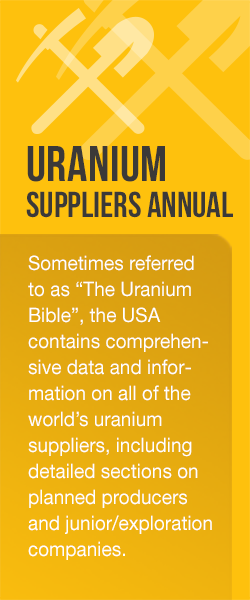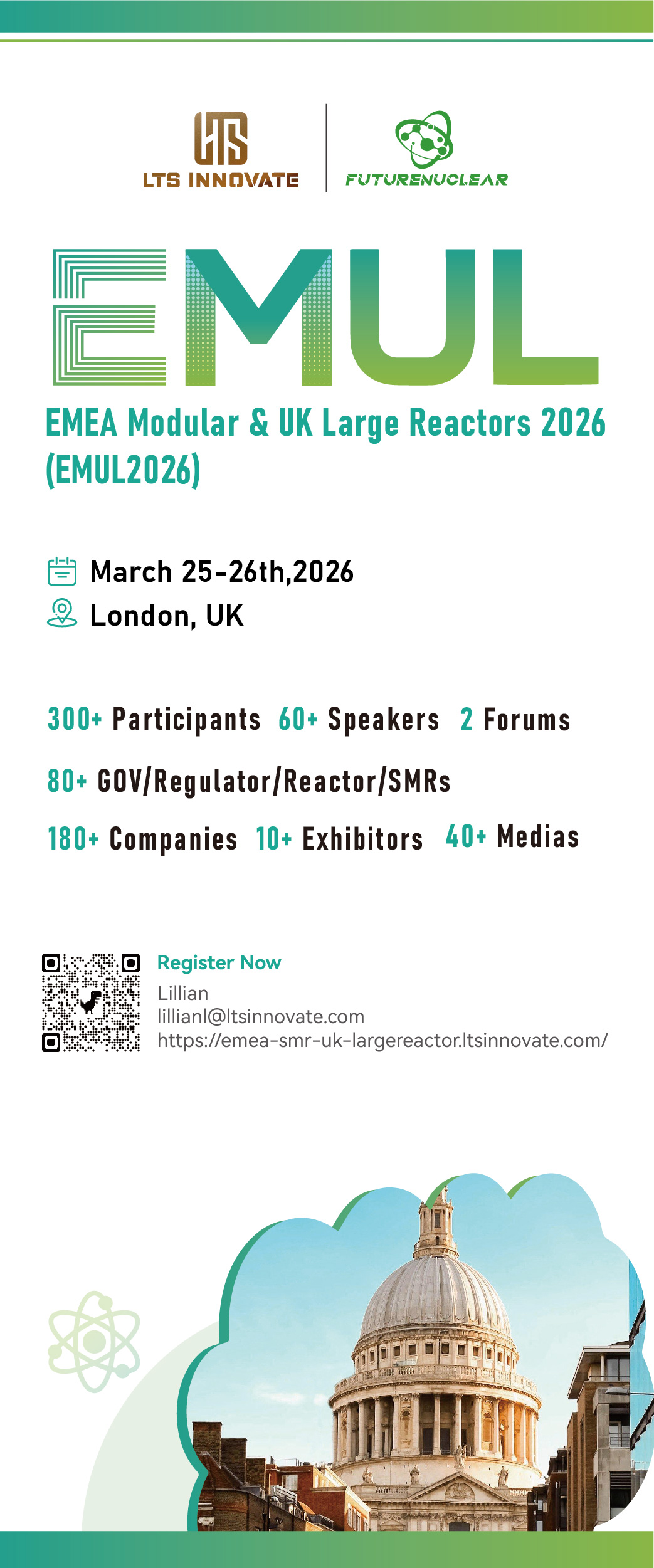Atoms for Peace … Atoms for Change
This coming Sunday, December 8th, will mark the 49th anniversary of President Dwight Eisenhower’s “Atoms for Peace” speech given at the United Nations (passages from the speech appear in italics below). This speech has tremendous historical significance for this industry, and its coming fiftieth anniversary represents an excellent opportunity to recognize the accomplishments of nuclear power as well as to formulate the role it will play in the future.
Historical context – To fully appreciate the importance of the speech, it is necessary to view it in its historical context. The speech was given at a time shortly after the United States and the Soviet Union had developed hydrogen bombs, and an unabated nuclear arms race between the two superpowers was looming on the horizon. It was Eisenhower’s concern about this development that motivated him to give the speech. However, it was not enough to warn the world about the horrors of nuclear war, Eisenhower felt it was necessary to provide an alternative path for the atom that would lead the world away from this danger: The United States knows that if the fearful trend of atomic military build up can be reversed, this greatest of destructive forces can be developed into a great boon, for the benefit of all mankind.
While the nuclear power industry has been uncomfortable with any linkage between commercial nuclear power and nuclear weapons, the reality is that the peaceful use of the atom was given greater urgency due to the horrors of nuclear war, as the above passage suggests. In particular, the speech paved the way for the United States to direct a greater portion of its nuclear budget to the peaceful uses of the atom. It also raised the public consciousness about nuclear matters in general, including the future of nuclear energy.
The 1990s: An Era of Stunning Success – The development of nuclear power in the years following the speech was not without its ups and downs, but the accomplishments of nuclear power in the United States since 1990 have been no less than remarkable. Since 1990, U.S. nuclear power output rose by an equivalent of about 25 1,000 megawatt reactors, so nuclear now supplies about 22% of U.S. electricity. During this same period, deliveries under the HEU deal between USEC and Tenex commenced, and over 150 MT of HEU have been delivered through this year, representing the equivalent of 6,000 warheads. Today, about half the enrichment and a large share of the uranium used in the United States comes from former Russian nuclear weapons material. This is not only an important source of fuel for the U.S., but it supplies Russia with a crucial source of revenue to provide safeguards for nuclear weapons material and personnel.
These accomplishments helped the nation deal with a number of challenges, including energy crises and fears about growing dependence on foreign oil, an increased awareness of the problem of global warming, and, more recently, worries over the diversion of nuclear materials to terrorists. These same concerns were shared internationally. One can only imagine how much worse off we would be today from an economic, environmental, and security standpoint if it were not for the rock-steady performance of nuclear power.
It is a great story and one that the industry has made known, but it is even greater when viewed in the context of the Atoms for Peace speech. This particularly applies to the accomplishments associated with the HEU deal. Eisenhower stated: It is not enough to take this weapon out of the hands of the soldiers. It must be put into the hands of those who will know how to strip its military casing and adapt it to the arts of peace. The HEU deal represents both the literal and figurative fulfillment of this goal, and one that is continuing today.
International in scope – The Atoms for Peace speech was clearly international in scope, leading to, among other things, the creation of Euratom and the International Atomic Energy Agency, the group that is currently in the news for conducting weapons inspections in Iraq. And, the success story of the atom is certainly not the United States’ alone, with advances in nuclear technology coming from all parts of the world. A number of European and Asian countries count on nuclear power to meet a large percentage of their electricity requirements, thus contributing to reducing the burden on fossil fuels and their environmental impact. For its part, Russia has made great strides resurrecting its nuclear power program in recent years. Much of the future growth of nuclear power is earmarked for the developing countries of Asia, where economic and population growth challenges are the greatest.
The mission ahead – One may ask why this editorial is being written now, instead of a year from now, closer to the fiftieth anniversary of the speech. This would be the case if the job were done, and then we could just reflect upon all of the accomplishments of the previous fifty years. While it is important to reflect on these accomplishments—and there have been many, the atom’s job is far from done; the challenges today are just as real, and that is why a new purpose needs to be articulated. The timing is critical, as energy policy is again being brought to the forefront both in the Congress and the private sector, where a new national commission for energy policy has been established (see story page 3). Also, it takes time to plan any meaningful recognition of the speech’s anniversary; these things aren’t done overnight.
As we approach the fiftieth anniversary of the speech, the question arises as to what will be the mission of the atom for the next fifty years? The peaceful use of the atom has already been established, and a new theme is needed, recognizing that any move forward must continue to incorporate this original goal. The title of this editorial contains but one idea for such a theme, and stems from the realization that the world will face unprecedented challenges over the next fifty years to supply clean, sustainable electricity to support economic and population growth that will test our available resources. During this period, a transition away from fossil resources will be required for a variety of reasons, not the least of which is expected exhaustion of some oil fields and the continued stress on the environment from burning fossil fuels.
A year of anniversaries and opportunities – The next year or so is full of important anniversaries for the nuclear industry. Today (Monday) is the 60th anniversary of the first man-made sustained nuclear reaction. Next year will mark the 10th anniversary of the government-to-government agreement between the U.S. and Russia for the purchase of 500 MT of HEU, the 25th anniversary of the nuclear non-proliferation treaty, and the 40th anniversary of the establishment of Techsnabexport.
As the fiftieth anniversary of the Atoms for Peace speech approaches, we, as an industry, should take this opportunity to point out the many advancements of nuclear power and other peaceful uses of the atom that have taken place over the past fifty years. But, perhaps more than this, we should use this as an opportunity to highlight the potential role of the atom over the next fifty years.
We should also commemorate this anniversary in some way. This could involve all or some of the following:
• A special conference could be held on the fiftieth anniversary of the speech.
• Existing conferences could devote special sessions in recognition of this anniversary.
• The Bush administration in conjunction with leaders from other countries could use this occasion to espouse a new mission for nuclear.
These are issues that the industry must decide, as most will take a collective effort. The challenge is to not let this opportunity slip by.
Our plan – For our part, we plan to do what we can. Through our headline news services and a new website, https://atompeace.org/ that is currently under development, we plan to inform readers about the past and ongoing accomplishments of nuclear power and the challenges that lie ahead. We also hope to develop a forum where individuals can reflect on these accomplishments and where ideas can be expressed about the future of nuclear power. We will also continue to chime in with our own views on this subject, which you can tell we are not bashful about doing.
We welcome any input that you may have, including information on important events and anniversaries, and suggestions about other ways we as an industry can move forward.
We also invite you to read the Atoms for Peace speech at: http://www.iaea.or.at/worldatom/About/atoms.html


